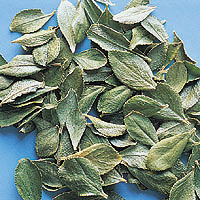Search Healthnotes
Buchu
 © Martin Wall
© Martin WallHow It Works
The leaves of buchu contain 1.0–3.5% volatile oils as well as flavonoids.4 The urinary tract antiseptic actions of buchu are thought to be due to the volatile oils. The primary volatile oil component thought to have antibacterial action is the monoterpene disophenol. However, one test tube study using buchu oil found no significant antibacterial effect.5
How to Use It
The German Commission E Monograph concludes there is insufficient evidence to support the modern use of buchu for the treatment of urinary tract infections or inflammation.6 However, some traditional herbal practitioners continue to recommend the herb for these conditions. Traditional recommendations for the herb include the use of 1–2 grams of the dried leaf taken three times daily in capsules or in a tea.7 Tinctures can be used at 2–4 ml three times per day.
Copyright © 2024 TraceGains, Inc. All rights reserved.
Learn more about TraceGains, the company.
The information presented by TraceGains is for informational purposes only. It is based on scientific studies (human, animal, or in vitro), clinical experience, or traditional usage as cited in each article. The results reported may not necessarily occur in all individuals. Self-treatment is not recommended for life-threatening conditions that require medical treatment under a doctor's care. For many of the conditions discussed, treatment with prescription or over the counter medication is also available. Consult your doctor, practitioner, and/or pharmacist for any health problem and before using any supplements or before making any changes in prescribed medications. Information expires December 2024.











